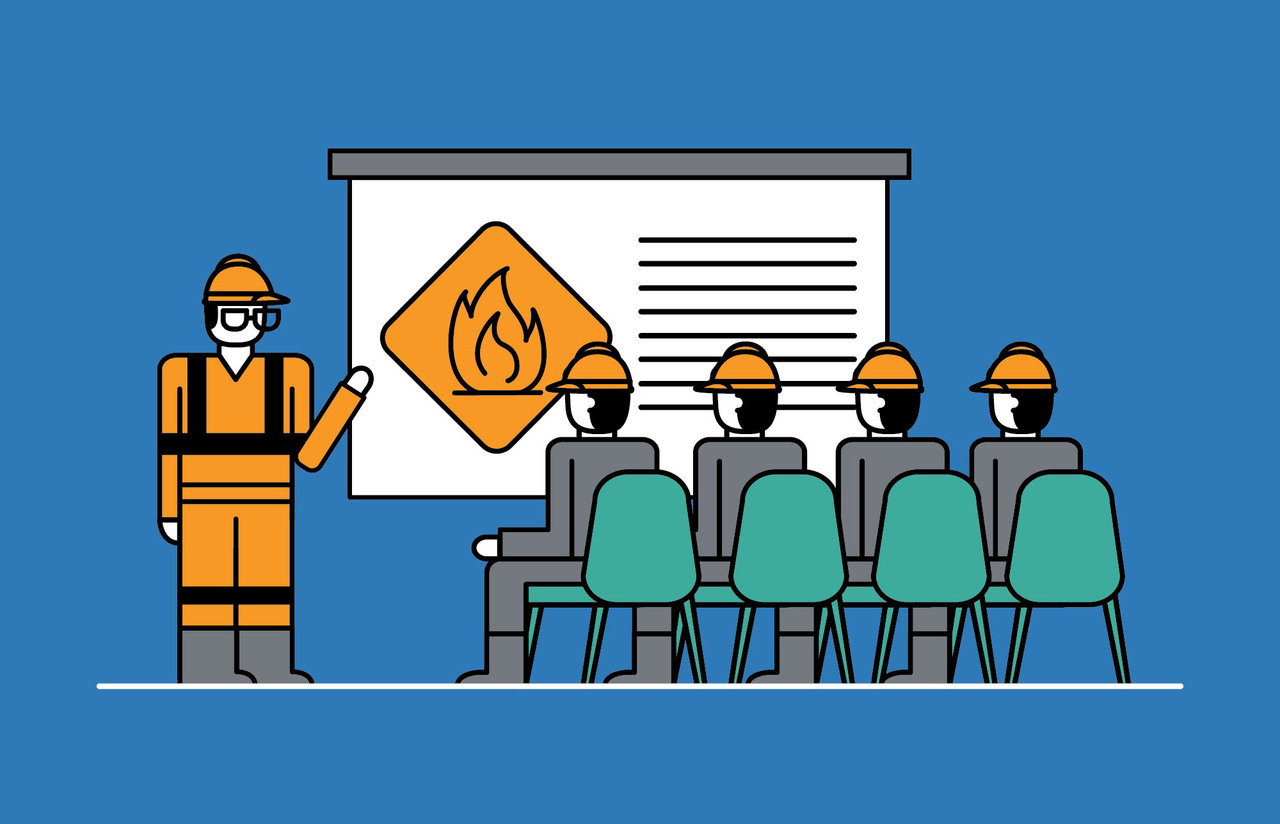Safety Training
Environment, Health & Safety Training
SecuredBuild is a top-rated training company offering tailored and personalized training services to clients seeking to enhance their safety skills. Our training solutions are built upon customized training objectives and goals tailored to meet the individual needs of clients. We understand the importance of adapting our training modules to suit clients’ existing plans, procedures, and working conditions. We adapt to different levels of knowledge, ensuring that each target audience receives the best training options suited to their specific needs and work culture. Additionally, we offer specialized training services for other HSE sectors upon request.
All our training modules are created by highly experienced professionals in a variety of industries, ensuring first-rate lessons that are both informative and practical.

- Lifting Operation Safety
- Rigging Equipment and Inspection
- Scaffolding and Ladder Safety
- Mobile Crane Safety
- Accident Prevention by ZAP (Zero Accident Program)
- Accident Investigation and Reporting
- Aerial Work Platforms(Scissor Lifts)
- Behaviour Based Safety BBS
- Back Safety
- Compressed Gas Safety
- Confined Spaces
- Construction Safety Orientation
- Controlled Substances
- Defensive Driving Safety
- Electrical Safety
- Emergency Response Plan(ERP)
- Environmental Regulations Overview
- Ergonomics
- Fall Protection
- Fire Extinguishers
- Fire Prevention Plan(FPP)
- First Aid / CPR / AED
- Food Safety
- Forklift Operator
- Hand and Power Tool Safety
- Hazard Identification and Risk Assessment HIRA / HIRAC
- KYT & HIRA
- Hazardous Waste Management
- Heat Stress Recognition and Prevention
- Hot Work Permits
Incident Command System
Indoor Hoisting and Rigging
Injury & Illness Prevention Plan
- HABC Level 2 Award in Fire Safety (QCF)*
- HABC Level 2 Award in Food Safety in Catering*
- *Highfield Awarding Body for Compliance (HABC)- It is developing an enviable reputation worldwide specializing in certifications in the field of Food Safety, Health and Safety, Fire, Licensing, Swimming Pool Lifeguarding, First Aid.
Introduction to Industrial Hygiene
Job Hazard Analysis
Laboratory Audits / Inspections
Laser Safety
Ladder Safety
LOTO / LOTOTO
Machine Guarding
Material Safety Data Sheets (MSDS)
Office Safety
Personal Protective Equipment
Pesticide Safety
Respiratory Protection
Radiation Safety
Road Safety in & outside of Hazardous Chemical Storage Sites
Slips, Trips, and Falls
Sprains and Strains
Spill Prevention, Control, and
Supervisor Safety
Trenching and Excavation Safety
Tools & Plants Safety
Warehouse Safety
Welding, Cutting, and Brazing
Workplace Inspections
Workplace Management by 5S
Working at Height
Working with Cranes, Forklifts, EOTs
HACCP**
Hazard Analysis & Critical Control Points (HACCP), Nutrition and Door Supervisor.
Safety training provides numerous benefits for both employers and employees, contributing to a safer and more productive work environment. Here are some key benefits of safety training:
Reduced Accidents and Injuries:
- One of the primary benefits is a reduction in workplace accidents and injuries. Proper training equips employees with the knowledge and skills to identify and mitigate potential hazards, minimizing the risk of accidents.
Compliance with Regulations:
- Safety training ensures that employees and employers are aware of and comply with relevant occupational health and safety regulations. Compliance can prevent legal issues and penalties.
Improved Employee Morale:
- Investing in the safety and well-being of employees demonstrates a commitment to their welfare. This can boost morale, job satisfaction, and loyalty, leading to a more positive work environment.
Increased Productivity:
- A safer workplace is often a more efficient one. When employees are confident in their understanding of safety procedures, they can focus on their tasks without the distraction of potential hazards, leading to increased productivity.
Cost Savings:
- Safety training can result in cost savings for employers. Fewer accidents mean reduced workers’ compensation claims, lower insurance premiums, and decreased costs associated with downtime, investigations, and potential legal fees.
Enhanced Organizational Reputation:
- A commitment to safety reflects positively on an organization’s reputation. Customers, clients, and business partners are more likely to engage with companies that prioritize the well-being of their employees.
Reduced Turnover:
- Employees who feel that their safety is a priority are more likely to stay with an organization. This can lead to lower turnover rates, reducing the costs associated with recruiting, hiring, and training new staff.
Early Hazard Identification:
- Safety training educates employees on how to identify and report potential hazards promptly. Early identification allows for preventive measures to be implemented before accidents occur.
Improved Emergency Response:
- Safety training includes instruction on emergency response procedures. Well-trained employees can respond more effectively to emergencies, reducing the severity of incidents and enhancing overall safety.
Enhanced Teamwork and Communication:
- Safety training often involves teamwork and communication exercises. This fosters better communication among employees, helping them work together more cohesively to address safety concerns.
Prevention of Long-Term Health Issues:
- Training on ergonomics and proper work practices can help prevent long-term health issues, such as musculoskeletal disorders, associated with certain types of work.
Cultural Shift Toward Safety:
- Safety training contributes to the development of a safety-conscious culture within an organization. When safety becomes a core value, employees are more likely to adhere to safety protocols and hold each other accountable.
Enhanced Employee Skills:
- Safety training often includes the development of practical skills, such as first aid and proper use of safety equipment. These skills can be valuable in both professional and personal contexts.
Adaptation to Changing Conditions:
- Safety training programs can be updated to address new technologies, changes in processes, or emerging hazards, ensuring that employees stay informed about evolving workplace conditions.
By realizing these benefits, organizations can create a safer, more resilient workplace that contributes to the overall success and sustainability of the business.
